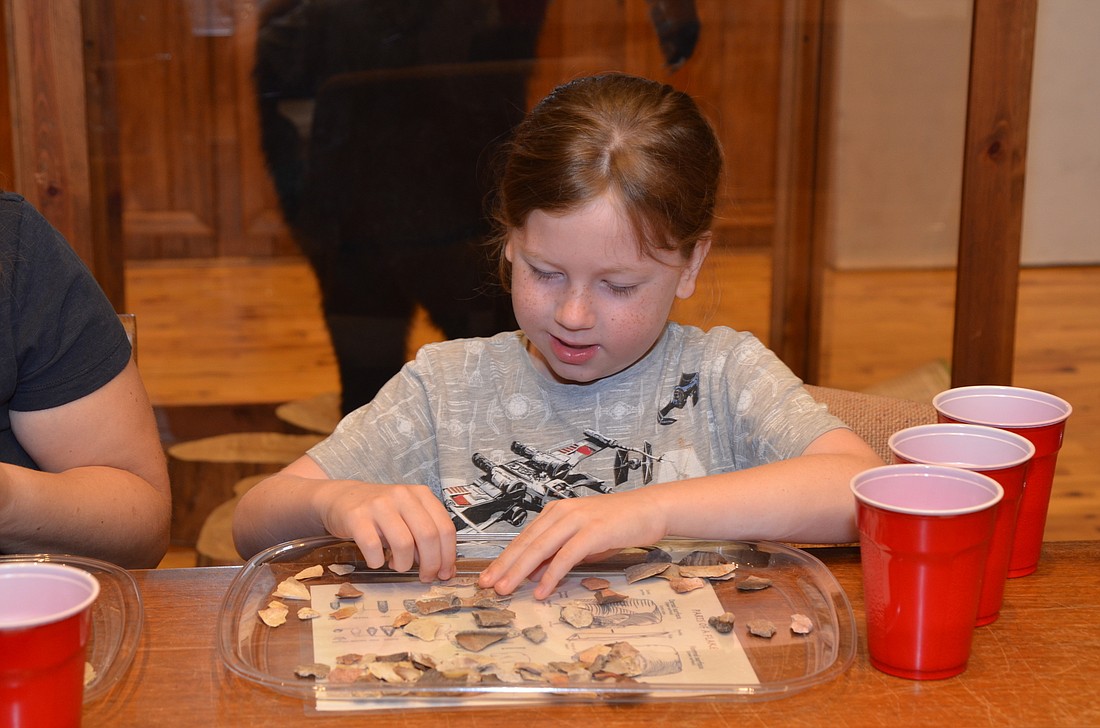- April 17, 2024
-
-
Loading

Loading

Buckets of various-sized flakes of stone sit in closets in the Education Center at the Oakland Nature Preserve. To the average person, they look pretty much the same, and they look like they could have come from any random yard or park in a random city in any part of the state.
But to archaeologist Kevin Gidusko, these little pieces explain when, where and how tools were made centuries ago.
“In examining the different lithic flake types we can make educated guesses about which stage of production was occurring in the area,” he said.
Gidusko is the public archaeology coordinator for the East Central Regional Center of the Florida Public Archaeology Network. He has dug his heels into a large project aimed at working with local cultural centers and artifact collectors to try and record information about the artifacts that have been donated or collected in the community.
The project is called CLAASP: Communities of Lake Apopka Artifact Survey Project.
“There is a long history of looting around Lake Apopka (and the state), and that — coupled with not a lot of professional archaeology being done there — has made our knowledge base of the prehistory there pretty slim,” he said. “We’re hoping to engage the public and make them part of the recording and preservation process through open lab days and the creation of interpretive material.”
The last open lab day was May 14, when Gidusko met with five volunteers and had them sorting lithic flakes according to the amount of cortex that was on them. They were given a laminated chart to help them in their endeavor.
“Artifacts are non-renewable resources that provide invaluable insight into the past life ways of the humans who have lived on this peninsula for nearly 15,000 years. While they are aesthetically appealing, and it is amazing to touch a tool that is thousands of years old, the information they provide us is far more valuable.” — Kevin Gidusko
Gidusko explained what the volunteers were actually sorting.
“The flakes are a by-product of stone tool manufacture, and they actually can inform archaeologists about a great deal,” he said. “Lithic flakes inform archaeologists in several ways. … They are not all made equal; their relative size is one indication about the stage in tool manufacture that was taking place at a site in prehistory. This ranges from larger flakes that are the result of knocking off the cortex of the chert (stone) to quite small flakes that are a result of retouching, or fine working, of a stone tool. You might expect to see many of the first type of flake at a place where the stone is gathered and many of the second type of flake within the context of a camp or living site, for example. This is a broad generalization, but serves to make the point.”
And while chert is found in Florida’s western Big Bend area, stone tools have been found throughout much of Florida. Gidusko said that means it had to be moved to these areas, most likely through trade networks.
“Archaeologists have discovered that chert can be examined and matched fairly accurately to its source location,” he said. “This means that we can literally trace the path of these stone tools across the state and through time.”
Some might argue that it’s a waste of time to try to identify and record items from the past. Gidusko strongly disagrees.
“Artifacts are non-renewable resources that provide invaluable insight into the past life ways of the humans who have lived on this peninsula for nearly 15,000 years. While they are aesthetically appealing, and it is amazing to touch a tool that is thousands of years old, the information they provide us is far more valuable.”
And so much more research is needed in this area.
Gidusko and three others presented a paper at the 81st Annual Meeting of the Society for American Archaeology in April in Orlando. They explained the CLAASP project, which is a public initiative to preserve archaeological information in Central Florida and, more specifically, the area near Lake Apopka.
This is one of Florida’s largest lakes, covering more than 30,000 acres, and archaeological sites show two Paleoindian Period sites near the lake and intermittent habitation throughout the Archaic to the Contact Periods, the authors wrote.
“And yet, at this great lake we have only 56 recorded sites within a one-mile radius of the lake itself, with only roughly half having been evaluated,” they wrote.
Professional worksites have not been in abundance, but locals have been finding arrowheads and pottery fragments, even an old wooden canoe, for decades.
Gidusko argues that this information belongs to the people and not any sole individual.
“The artifacts being recorded at the Oakland Nature Preserve (and hopefully other sites in the future) may potentially serve to shed light on the past peoples of the Lake Apopka region, an area far underserved in archaeological research for a number of reasons,” Gidusko said. “Our goal is to examine whether our ideas about the prehistory of this region might need to be reconsidered based on the artifactual record at hand.
“By utilizing these collections that have lost their context we are also engaging the community in the process of archaeological research, so that they understand and see with their own eyes the amount of effort that is undertaken to better understand our shared past.
“The local population of any place is the first, best place to look for good stewards of our shared cultural resources. By bringing this research to the public we think we are creating the opportunity for future stewards of the land to rise to the occasion.”
Contact Amy Quesinberry Rhode at [email protected].